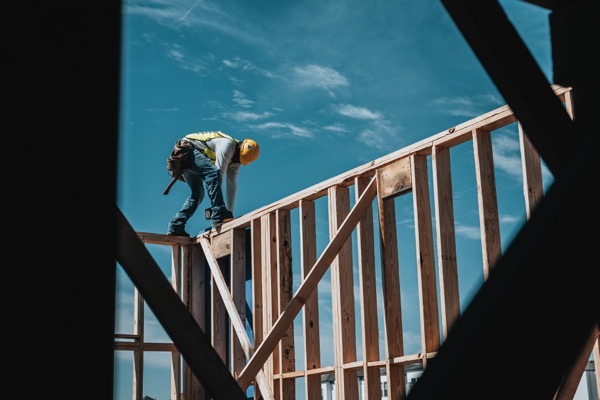
Governor of California Gavin Newsom signed bills that are intended to increase California’s housing supply and fight the housing crisis. These bills were signed on September 16, 2021. They are part of California’s Comeback Plan.
Senate Bill 9 was sponsored by California State Senate President Pro Tem Toni Atkins (D-San Diego). According to the Los Angeles Times, this bill would require cities to approve up to four housing units on what was a single-family lot. They would also have to approve splitting single-family lots so they could be sold separately.
Atkins included ways that local governments can block construction that might harm public safety or public health or benefit housing speculators. Property owners seeking to split a lot would have to agree to have one of the housing units as their principle residence for at least three years.
Los Angeles Times
A Simple Explanation of Senate Bill 9
The title of SB 9 is the “California Housing Opportunity and More Efficiency (HOME) Act”. The website of the Office of Governor Gavin Newsom pointed out that the HOME Act “facilitates the process for homeowners to build a duplex or split their current residential lot, expanding housing options for people of all incomes that will create more opportunities for homeowners to add units on their existing properties. It includes provisions to prevent the displacement of existing renters and protect historic districts, fire-prone areas and environmental quality.”
Why Senate Bill 9 Matters
The Turner Center for Housing Innovation stated that the passage of SB 9 is significant “given that nearly two thirds of zoned land in California is reserved for single-family homes, which drastically limits where new development can take place.” This law will take effect on January 1, 2022.
According to the Turner Center for Housing, SB 9 will not solve California’s housing deficit on its own. The Turner Center’s recent analysis “shows that just 5.4% of single family parcels would be financially capable of supporting new housing as a result of SB 9.”
Still, its passage is significant for many reasons. Single-family-only zoning is rooted in exclusion, and unwinding the vestige of racial segregation is long overdue. The parcel subdivision provision of SB 9 has the potential to open up new financing options and wealth-building opportunities for low- and moderate-income homeowners.
While legislation predating SB 9 expanded the ability of homeowners to add an accessory dwelling unit on their single-family property, our research has found that the wealth-building benefits are generally only available to affluent homeowners who have access to cash savings or home equity. SB 9 opens up the option of traditional construction financing to build the additional homes on a property.
Terner Center for Housing Innovation
CapRadio provided a more detailed explanation regarding single-famliy zoning.
Single-family zoning, which SB 9 seeks to eliminate, has deeply racist roots. Originally introduced in Berkeley in 1916, the designation was used to block a Black-owned dance hall from moving into a primarily white neighborhood. The zoning not only precluded the dance hall, but also multifamily units more commonly occupied by people of color.
CapRadio
In other words, SB 9 is going to make it easier for low-income, and moderate-income, people in California to afford a home. The change in zoning, from one plot with a single-family home on it, to a plot with more than one home on it, could make housing more affordable. This change helps to undo the racial segregation that led to plots of land to be zoned as single-family, only.
Senate Bill 10 was sponsored by California State Senator Scott Weiner (D-San Francisco). This bill would require a city or county to adopt a general plan for land use development within its boundaries that includes, among other things, a housing element. The Los Angeles Times reported that this bill would ease the way for local governments to rezone their neighborhoods near mass transit for up to 10 housing units.
A Simple Explanation of Senate Bill 10
The website of the Office of Governor Gavin Newsom points out that SB 10 “creates a voluntary process for local governments to access a streamlined zoning process for new multi-unit housing near transit or in urban infill areas, with up to 10 units per parcel. The legislation simplifies the CEQA requirements for upzoning, giving local leaders another tool to voluntarily increase density and provide affordable rental opportunities to more Californians.”
In a signing message regarding Senate Bill 10, Governor Newsom wrote the following:
“I am signing Senate Bill 10, a bill that will allow jurisdictions to pass an ordinance to zone any parcel for up to ten residential units if located in transit-rich and urban infill areas. Adoption of the ordinance, or a resolution to amend a general plan consistent with the ordinance, would be exempt from the California Environmental Quality Act [CEQA]…
“…While the benefits of this bill are promising, certain provisions may have unintended impacts on affordable housing projects that use density bonuses, as well as possible Fair Housing implications based on how jurisdictions may choose to implement its provisions.
“Therefore, I am directing the Department of Housing and Community Development’s newly established Housing Accountability Unit to vigilantly monitor the implementation of this bill at the local level, and if needed, work with the Legislature to proactively address any unintended consequences, should they arise…”
Why Senate Bill 10 Matters
The sponsor of SB 10, Senator Scott Weiner, said: “California’s severe housing shortage is badly damaging our state, and we need approaches to tackle it.” He continued, “SB 10 provides one important approach: Making it dramatically easier and faster for cities to zone for more housing. It shouldn’t take five or 10 years for cities to re-zone, and SB 10 gives cities a powerful new tool to get the job done quickly….”
The Terner Center for Housing Innovation provided this information:
…Senate Bill 10, a bill introduced by Senator Scott Wiener that allows cities to bypass the typical environmental review process when rezoning areas for up to ten new homes. Senate Bill 478, authored by Senator Wiener, also passed the legislature as well. The bill would limit Floor Area Ratio (FAR) requirements for small-scale housing, essentially removing a tool some cities have used to stymie housing production. Our analysis of an earlier version of this bill shows that FAR is not used widely in residential land use regulations, but where it is, these new limits could be impactful…
Terner Center for Housing Innovation
The California Department of Housing and Community Development, who did research on the housing crisis in a study titled: “California’s Housing Future: Challenges and Opportunities,” provided the following information:
- Production averaged less than 80,000 homes annually over the last 10 years, and ongoing production continues to fall far below the projected need of 180,000 additional homes annually.
- Lack of supply and rising costs are compounding growing inequality for younger Californians.
- One-third of renters pay more than 50% of income toward rent.
- Homeownership rates are at their lowest in California since the 1940s.
- California accounts for a disproportionate 22% of the nation’s homeless population.
- Continued sprawl will decrease the affordability and quality of life while increasing combined housing and transportation costs on families.
In other words, SB 10 (and SB 478) are designed to prevent cities from flat out refusing to re-zone because the NIMBY groups are throwing a fit in opposition to a proposed development plan in their area. Instead, it gives the cities tools to implement what is really needed – the building of more affordable housing.
In regards to the NIMBYs, the California Attorney General, Rob Bonta, won a case against the NIMBYs in an appellate court decision (on September 13, 2021). The case was California Renters Legal Advocacy and Education Fund v. City of San Mateo.
According to a press release on the Attorney General’s website, the appellate court upheld “the constitutionality and statewide applicability of the California Housing Accountability Act (HAA).
…The HHA protects housing availability and affordability by imposing limits on the abilities of cities to reject proposals for housing developments that otherwise satisfy general plan and zoning requirements. The California Department of Justice intervened in the case last year. As part of the decision, the appellate court highlighted the critical need for HAA and reverse the trial court’s erroneous decision that threatened to undermine key state protections aimed at increasing the availability of housing…
California Attorney General website
The press release on Governor Gavin Newsom’s website, regarding housing laws he signed, refers to the law that the appellate court upheld as (the “anti-NIMBY law”).
Governor Newsom Signed Bills To Build More Housing in California is a post written by Jen Thorpe on Book of Jen and is not allowed to be copied to other sites.
If you enjoyed this blog post please consider supporting me on Ko-fi. Thank you!
